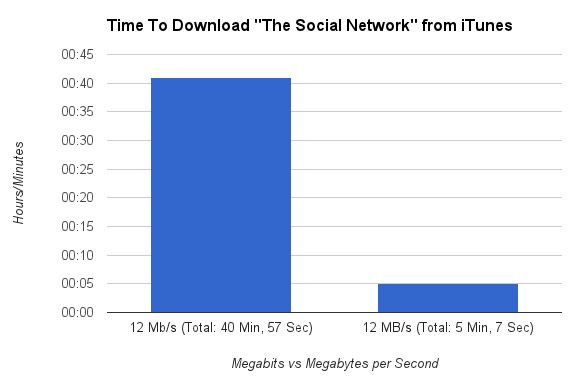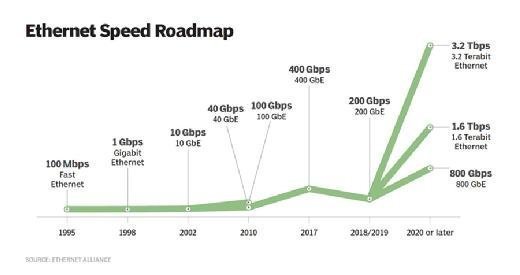The Impact of Megabits Per Second on Streaming Quality and Performance
The Impact of Megabits Per Second on Streaming Quality and Performance
Blog Article
How Megabits Per Second Impact Your Online Activities
The concept of megabits per second (Mbps) plays a critical role fit our on the internet experiences. As digital activities proliferate, understanding the ramifications of Mbps on video, gaming, and streaming conferencing becomes progressively essential. Higher Mbps can enhance efficiency and lower disturbances, while insufficient speeds may foster aggravation and inefficiency. Assessing your house's details demands in connection to these speeds is important, particularly as numerous gadgets contend for data transfer. Yet, the nuances of just how Mbps influences different online activities require further expedition, especially as our dependence on electronic connectivity continues to progress.
Comprehending Megabits Per Second
When thinking about net rate, it's vital to understand the concept of megabits per second (Mbps), which works as a common measurement for data transfer prices. This statistics measures just how much data can be transferred over a net connection in one second, providing a clear understanding of efficiency capacities - Megabits Per Second. For context, one megabit is equal to one million little bits, and Mbps is commonly used to share bandwidth for different on-line tasks
A higher Mbps suggests a quicker internet link, enabling users to do jobs such as downloading files, searching internet sites, and engaging in on the internet video gaming extra efficiently. Regular surfing requires around 1-5 Mbps, while streaming high-definition video may require 5-25 Mbps. Recognizing these requirements is vital for determining the suitable web speed required for certain activities.
Furthermore, the variety of gadgets attached to a network can impact general performance. Several individuals streaming, gaming, or downloading concurrently can stress offered transmission capacity, causing slower rates - Megabits Per Second. Examining individual online routines and demands is important in choosing an internet plan that aligns with one's demands, making certain a smooth digital experience
Streaming and Buffering Issues
Streaming high-definition content has come to be a staple of modern-day on the internet enjoyment, yet it is commonly come with by irritating buffering problems. These disruptions can considerably diminish the watching experience, bring about discontentment and potential loss of target market interaction. Buffering happens when the data sent from the streaming solution is not received quickly sufficient to preserve a smooth playback, frequently due to not enough web speed gauged in megabits per second (Mbps)

Furthermore, real-time streaming can be affected by network blockage, which takes place when several gadgets share the exact same bandwidth. Enhancing connection rate and guaranteeing sufficient Mbps is important for a smooth streaming experience. As streaming solutions remain to develop, recognizing the effect of Mbps on buffering problems remains critical for customers seeking nonstop amusement.
Online Video Gaming Efficiency
The effect of internet rate on on-line tasks prolongs past streaming, substantially influencing on-line gaming efficiency. In competitive video gaming, reduced latency and high data transfer are crucial for a seamless experience. A rapid connection lessens lag, allowing players to respond swiftly to in-game occasions, which can be the distinction between success his comment is here and loss.
Bandwidth, gauged in megabits advice per second (Mbps), plays an important duty in supporting several tools and gaming platforms simultaneously. Inadequate transmission capacity can lead to dropped links or reduced game high quality, adversely affecting gameplay. Online multiplayer games require considerable information transfer, especially throughout peak pc gaming hours when numerous players are online.
Hectic first-person shooters demand higher rates to preserve responsiveness, while turn-based strategy video games might work reasonably well on reduced speeds. As online pc gaming continues to develop, with increasing visual fidelity and even more complicated multiplayer environments, the need for greater Mbps will only intensify.
Video Clip Conferencing High Quality
In today's digital landscape, video clip conferencing high quality is heavily affected by internet rate, specifically in terms of transmission capacity and latency. High-grade video clip calls require enough transmission capacity to transmit sound and video information perfectly. Generally, a minimum of 1.5 Mbps upload and download rates is suggested for standard interpretation video, while high-def video clip conferencing usually demands at the very least 3 Mbps.
Latency, or the delay in between sending and getting data, likewise plays a vital duty in the user experience. Reduced latency ensures that conversations circulation naturally without uncomfortable stops or interruptions. Ideally, latency needs to be below 150 milliseconds for reliable communication. Higher latency can cause resemble, lag, and disjointed interactions, which can impede cooperation and engagement during conferences.
Furthermore, numerous participants in a video clip meeting can strain available data transfer, demanding also greater rates. Network blockage, frequently triggered by synchronised tasks like streaming or downloading, can better weaken video clip top quality. Thus, for organizations counting on video conferencing for remote partnership, comprehending the connection in between megabits per general and second communication quality is vital for preserving efficiency and improving virtual interactions.
Choosing the Right Internet Plan
Picking an ideal web strategy is important for making sure ideal performance in various online tasks, specifically in setups that demand high bandwidth, such as video clip conferencing and online pc gaming. Megabits Per Second. When taking into consideration a web plan, it is important to evaluate both the rate and information allowance to match your specific use demands
For homes with multiple customers taking part in simultaneous tasks, a strategy providing higher megabits per second (Mbps) is suggested. Usually, a minimum of 25 Mbps is appropriate for basic streaming and browsing, while strategies surpassing 100 Mbps are more suitable for even more intensive jobs. In addition, think about the nature of your online activities; video clip conferencing requires at the very least 1.5 Mbps submit click here to find out more rate, while on the internet gaming might need a reduced latency but regular connection.
Endless information strategies can avoid throttling and disturbances, specifically if hefty usage is prepared for. By thoughtfully selecting a web strategy customized to your requirements, you can enhance your online experience, guaranteeing smooth, undisturbed accessibility to your favored activities.
Conclusion
In final thought, the significance of megabits per second (Mbps) in shaping on-line activities can not be overstated. A thorough understanding of specific or home Mbps needs is necessary for selecting a proper internet strategy that properly sustains diverse online tasks and user demands.

Generally, a minimum of 25 Mbps is suitable for typical streaming and surfing, while plans exceeding 100 Mbps are preferable for even more extensive tasks. In addition, consider the nature of your online activities; video clip conferencing needs at least 1.5 Mbps post rate, while online gaming might need a reduced latency however consistent link.
Report this page